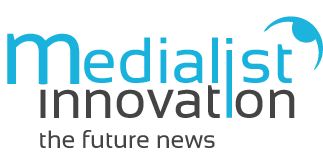2020 was the year when a lot changed in the world of work. The pandemic and the resulting change in the way employees work led to an enormous acceleration of digitalization in the workplace. In this context, a recent study by the ifo Institute shows that home office use among full-time employees in Germany has leveled off at an average of 1.4 days per week. “Never before has any event so comprehensively transformed working life in such a short time,” said Mathias Dolls, one of the study’s authors, of the survey’s pandemic findings.
The word “hybrid” comes from Latin and means “of two origins.” It couldn’t be a better descriptive word for the new world of work we’re heading into. Hybrid work refers to both working in the office and working in a home office, co-working space or café. Hybrid doesn’t mean the end of teamwork or a complete disconnect from the company, but rather a rethinking of how work can function. You’re still a team, just not necessarily in one place. Digital tools and channels help to overcome the distance and thus merge analog and digital.
This new way of working brings many benefits because it combines the best of the analog and digital worlds. For one thing, flexible and hybrid working models allow companies to save costs in the long term and also position their team to be crisis-proof in the long term through new constellations. In addition, hybrid work offers an enormous advantage in the “war for talent,” because the ability to take into account individual factors of each employee increases the attractiveness as an employer enormously and ensures better employee loyalty.
But despite all the advantages, hybrid working is no easy task and demands a high degree of flexibility from the company, IT and office equipment. As nice as it is to have two types of workers coming together, it’s challenging to treat them all equally and not give priority to those on the ground or those in digital. Hybrid means that a team has the same (team) experience regardless of location. If this doesn’t happen, conflicts can arise within the company. You also need to maximize flexibility within the hybrid system, because just because some people like to work in a home office doesn’t mean they still don’t want to come back to the office occasionally.
The hybrid work system ensures that the organization using it enjoys the special benefits that come with the remote work system. But what benefits does the hybrid model now bring? In the home office, according to findings in recent years, employees enjoy a high degree of flexibility in their work, plus labor costs are reduced and work-life balance is better addressed. But if virtual working is so great, why go back to the office at all? The traditional work system also comes with its benefits, such as the interaction and creativity that comes from a team working together in person. Used to the right extent, this coexistence of the benefits of analog and digital working brings an advantage to companies and employees alike.
But is there a single definition of how much analog and how much digital is right for employees? There are companies that allow their employees to increase their virtual working hours up to 100 percent. Of course, all of this must be contractually regulated and in line with the company’s purpose and work, but there are not necessarily limits to creativity in the digital workplace. Companies that want to display such flexibility for their employees should document everything precisely in the contract and record the hybrid work arrangements, especially in terms of location and time. This also includes maximum duration of remote work and possible geographic restrictions on where the remote workplace may be located.
These additional definitions alone demonstrate that hybrid models present employers with critical organizational challenges related to smoothly connecting on-site and remote workers. Finally, the focus of new work models should be on people, companies, as well as tasks.
In particular, the OECD’s 2021 study reports that while both employers and employees expect greater use of remote work post-pandemic, relatively few employees will go fully digital. The hybrid model, therefore, can be very attractive for the future of work to address individual employee needs. If used properly, this approach can avoid negative aspects of remote work, such as impeded collaboration and networking, reduced interaction, and potential consequences for long-term career development, while achieving a better work-life balance. In addition, evidence suggests that workers who are in the home office more often are less likely to be sick and stay at work longer.
The aforementioned trend toward work-life balance plays a particularly important role in the hybrid office. As the quality of life increases, employees are more satisfied and the turnover rate, which had risen sharply especially after Corona, drops again. However, to make this possible, processes need to be well managed and thought out so that the resources needed for daily work resemble those in the office and the flow of information is always transparent and efficient.
But what do you think of the hybrid work trend? Is it the future of work or rather a hindrance on in everyday work? Let me know in the comments.

